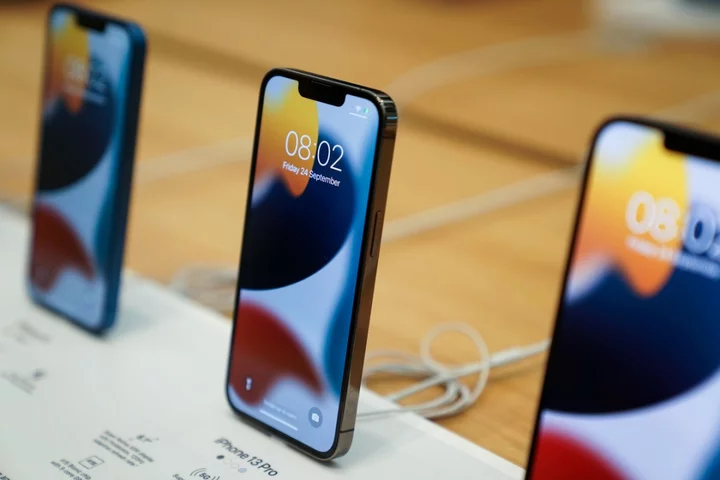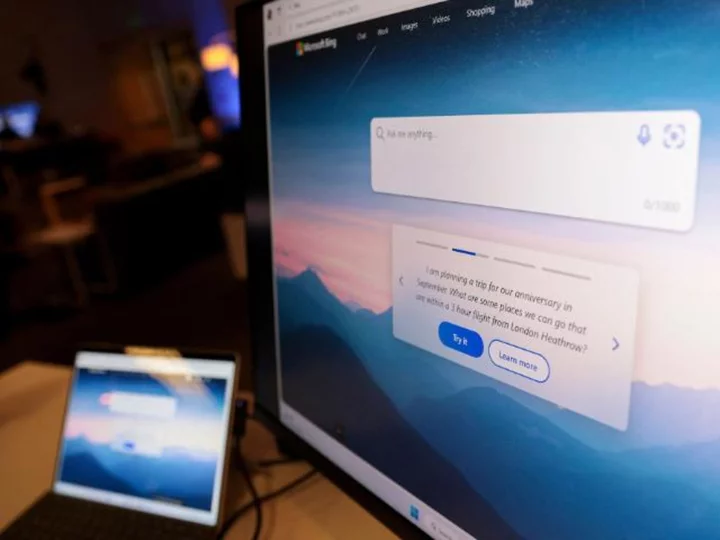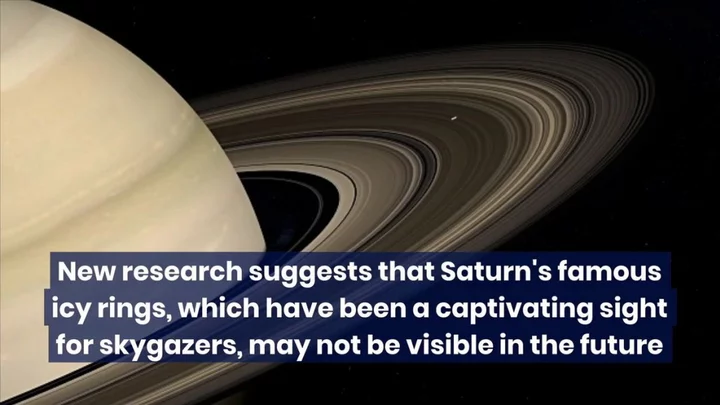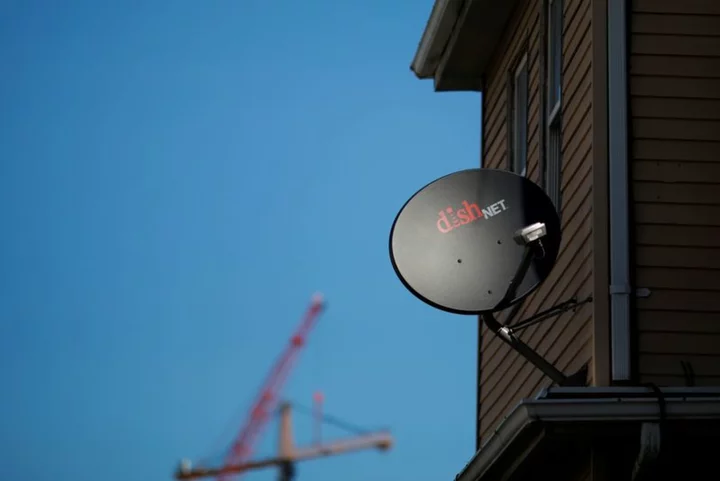
Snowflake Plunges by Most Ever as Cloud Spending Wobbles
Snowflake Inc.’s stock had its worst day ever after the company gave a quarterly sales outlook that fell
2023-05-26 04:58

iOS 17: New iPhone update could completely change how lock screen works
The upcoming major iPhone update could change how its lock screen works, according to a new report. iOS 17, which will be revealed during Apple’s Worldwide Developer Conference (WWDC) in early June, is rumoured to bring a whole host of changes to the iPhone, including journaling apps and additions for the Health. While that WWDC event is likely to focus on Apple’s rumoured new headset, there is expected to be plenty of upgrades for other platforms too. One of those upgrades is the new feature that will change the iPhone’s lock screen so that it works more like an “ambient” display, according to a new report. That would mean that it would provide extra information – such as weather reports, calendar updates and more – when it was left on. As such, it could take on the job of an alarm clock or kitchen display, and then move back into being an iPhone or iPad when it was taken on the move. The mode will switch on when the phone or tablet is placed down in landscape mode, according to a new report from Bloomberg. It would allow the devices to compete with other smart displays from Amazon and Google, which both offer screens that are intended to be used in the kitchen or bedroom and are operated through their virtual assistants. Apple has not made one of those screens, though it has often been rumoured to be working on. Its only smart home equipment has focused on audio, in the form of the HomePod and HomePod Mini. Now Apple could replicate the functionality without requiring people to buy a whole new display. Apple already offers something similar in its watches, which have a devoted “nightstand mode” when they placed on their side for charging. When that happens, they show a more ambient time that allows them to be used as an alarm clock by the bed, for instance. And Apple has recently made a number of changes to the home and lock screens with a view to making them more actively useful. Last year, with iOS 16, it added widgets to that lock screen, for instance. The iPhone 14 Pro, released last year, also includes an always-on display that would presumably mean they could show that ambient mode without too much battery drain. Read More Apple lays bare danger of losing your health data Apple is making a ‘mixed reality’ headset. Here’s what that future might look like Montana TikTok ban ‘unconstitutional’ and ‘impossible to enforce’ Apple and Samsung use AI to make phones more accessible for disabled people Apple releases its first transparent product in years New iPhone feature can recreate your voice perfectly after just 15 minutes
2023-05-26 04:55

Microsoft leaps into the AI regulation debate, calling for a new US agency and executive order
Microsoft joined a sprawling global debate on the regulation of artificial intelligence Thursday, echoing calls for a new federal agency to control the technology's development and urging the Biden administration to approve new restrictions on how the US government uses AI tools.
2023-05-26 00:46

Saturn’s rings are disappearing and could be gone relatively soon
Saturn’s rings might disappear pretty soon astronomically speaking, according to new research. A new analysis of data captured by NASA’s Cassini mission, which orbited the planet between 2004 and 2017, has revealed new insights into when the seven rings were formed and how long they might last. During Cassini’s Grand Finale, when the spacecraft completed 22 orbits in which it passed between Saturn and its rings, the researchers observed that the rings were losing many tons of mass per second, which means the rings will only be around another few hundred million years at most. “We have shown that massive rings like Saturn’s do not last long,” said Paul Estrada, research scientist at NASA’s Ames Research Center in Mountain View, California, and a coauthor of the studies, in a statement. “One can speculate that the relatively puny rings around the other ice and gas giants in our solar system are leftover remnants of rings that were once massive like Saturn’s. Maybe some time in the not-so-distant future, astronomically speaking, after Saturn’s rings are ground down, they will look more like the sparse rings of Uranus.” Sign up to our free Indy100 weekly newsletter Saturn’s rings are made mostly of ice but have a small amount of rocky dust created by broken asteroid fragments and micrometeoroids colliding with the rings. The research also found that the rings appeared long after Saturn’s initial formation, and were still forming when dinosaurs roamed the Earth. “Our inescapable conclusion is that Saturn’s rings must be relatively young by astronomical standards, just a few hundred million years old,” said Richard Durisen, professor emeritus of astronomy at Indiana University Bloomington and lead author of the studies in a statement. “If you look at Saturn’s satellite system, there are other hints that something dramatic happened there in the last few hundred million years. If Saturn’s rings are not as old as the planet, that means something happened in order to form their incredible structure, and that is very exciting to study.” Have your say in our news democracy. Click the upvote icon at the top of the page to help raise this article through the indy100 rankings.
2023-05-26 00:19

Scientists develop powerful ‘pulses’ that can induce immediate ‘hibernation’ – and it could help us explore space
Scientists have developed new ultrasound technology that can induce immediate “hibernation”, they say. The system can be aimed at the head and bring on “torpor” a state similar to hibernation where mammals suppress their metabolism, reduce their body temperature and slow down other processes. The researchers behind the new system successfully brought it on in mice and rats, after pointing the ultrasound pulses at the animals’ heads. They suggest that it could work in humans – and might have important applications for long-distance space flight or medicine, they say. While further work is needed to understand how it might work on people, they suggest that it could be used when people have experienced acute emergencies or severe disease, for instance. If someone is in a car accident, for instance, they could essentially be put on ice until their organs are used for transplantation, for instance. It might also be useful in long journeys through space, where it would help reduce the amount of resources that people might stay alive if they are travelling to Mars or other distant locations. Mammals and birds keep high body temperatures and burn through a lot of energy. That characteristic is useful host of ways, but almost means that they require a lot of food and other resources. Some animals are able to limit the drawbacks of that situation by inducing torpor, which turns down many of those processes. It means that they use less energy, but are able to come back to living as normal after, without damage to their body. Humans are not able to do that. But if they were, it would be incredibly useful – which has led to the search for a noninvasive, safe and reliable way of inducing that state. The scientists found that directing ultrasound pulses at mice’s heads for around 10 seconds brought on the same conditions as torpor, with their heart rate slowing, their body temperature cooling and their metabolism slowing. They also built a special system that was able to measure that body temperature and send more of those pulses if a mouse appeared to be coming back to normal. Without that, however, the mice would wake back up again, returning to normal metabolism and body temperature. There are still a host of dangers, however. Experiments have shown that it is dangerous to bring animals back from those deep “torpid” states, and that they might not recover. If the mice were in cold environments, for instance, they did not spontaneously wake up. And any experiments in humans would be at risk of repeating those safety issues for people. The work is described in a new paper, ‘Induction of a torpor-like hypothermic and hypometabolic state in rodents by ultrasound’, published in Nature. Read More Apple lays bare danger of losing your health data What is Twitter Spaces and why did it go so wrong during DeSantis’s 2024 launch? Electric car range set to double with first production of breakthrough battery Apple lays bare danger of losing your health data What is Twitter Spaces and why did it go so wrong during DeSantis’s 2024 launch? Electric car range set to double with first production of breakthrough battery
2023-05-25 23:49

Earth has received its first ever 'alien message'
Earth has received the first ever ‘alien message’ after a simulation of what extraterrestrial contact could look like was sent out by scientists. The SETI Institute produced the simulation of a radio wave from a Mars orbiter and gave hint of how alien contact would be received. The exercise was conducted to prepare experts for the “profoundly transformational experience for all humankind”. The signal was successfully decoded after taking just 16 minutes to travel through space and be picked up by telescopes on Earth. Sign up to our free Indy100 weekly newsletter It all took place as part of the A Sign in Space project led by Daniela dePaulis, who said during the live-streamed event: “It was very real. This is not the first time we have received a signal from TGO [ExoMars Trace Gas Orbiter], but this one is a real message.” The signal had to be decoded, as it couldn’t be heard on Earth without being altered. Victoria Catlett is the GBO software engineer and she explained: “A radio signal is not inherently sound, but a light wave. “When we receive it with something like a car radio, that light wave gets translated into the up and down movement in the speaker - and that is what you hear.” Of course, there’s no evidence that aliens exist at this point, but it’s good to know that we’re prepared. It comes after it was revealed that aliens could be mapping out the planet via the signals mobiles are emitting. It’s all to do with the radio transmission towers which are key to millions of people communicating around the world. These towers are constantly pumping out microwave signals as we call and message one another, and they’re found across a huge area of the Earth’s surface. Have your say in our news democracy. Click the upvote icon at the top of the page to help raise this article through the indy100 rankings.
2023-05-25 23:24

Nvidia stuns markets and signals how artificial intelligence will reshape technology sector
Shares of Nvidia, already one of the world’s most valuable companies, are skyrocketing after the chipmaker forecast a huge jump in revenue, signaling how vastly the broadening use of artificial intelligence could reshape the tech sector
2023-05-25 23:21

Exclusive-AI rules 'cannot be bargained', EU's Breton says after OpenAI CEO threat
By Foo Yun Chee BRUSSELS Europe's artificial intelligence (AI) rules are not for negotiation, EU industry chief Thierry
2023-05-25 22:59

Dish Network surges after report says it plans to sell wireless plans via Amazon
Dish Network Corp surged over 15% premarket on Thursday after a report said the company was in talks
2023-05-25 21:28

The Chinese groups accused of hacking the U.S. and others
SINGAPORE Chinese hacking teams have been blamed by Western intelligence agencies and cybersecurity groups for digital intrusion campaigns
2023-05-25 20:49

AI chip boom sends Nvidia's stock surging after whopper of a quarter
The AI boom is here, and Nvidia is reaping all the benefits. Shares of Nvidia exploded 28% higher Thursday after reporting earnings and sales that surged well above Wall Street's already lofty expectations.
2023-05-25 20:47

Delaware taps artificial intelligence to evacuate crowded beaches when floods hit
Delaware officials are hoping an influx of federal infrastructure money means that future evacuations of crowded beaches during floodwaters can happen automatically through artificial intelligence
2023-05-25 20:26
